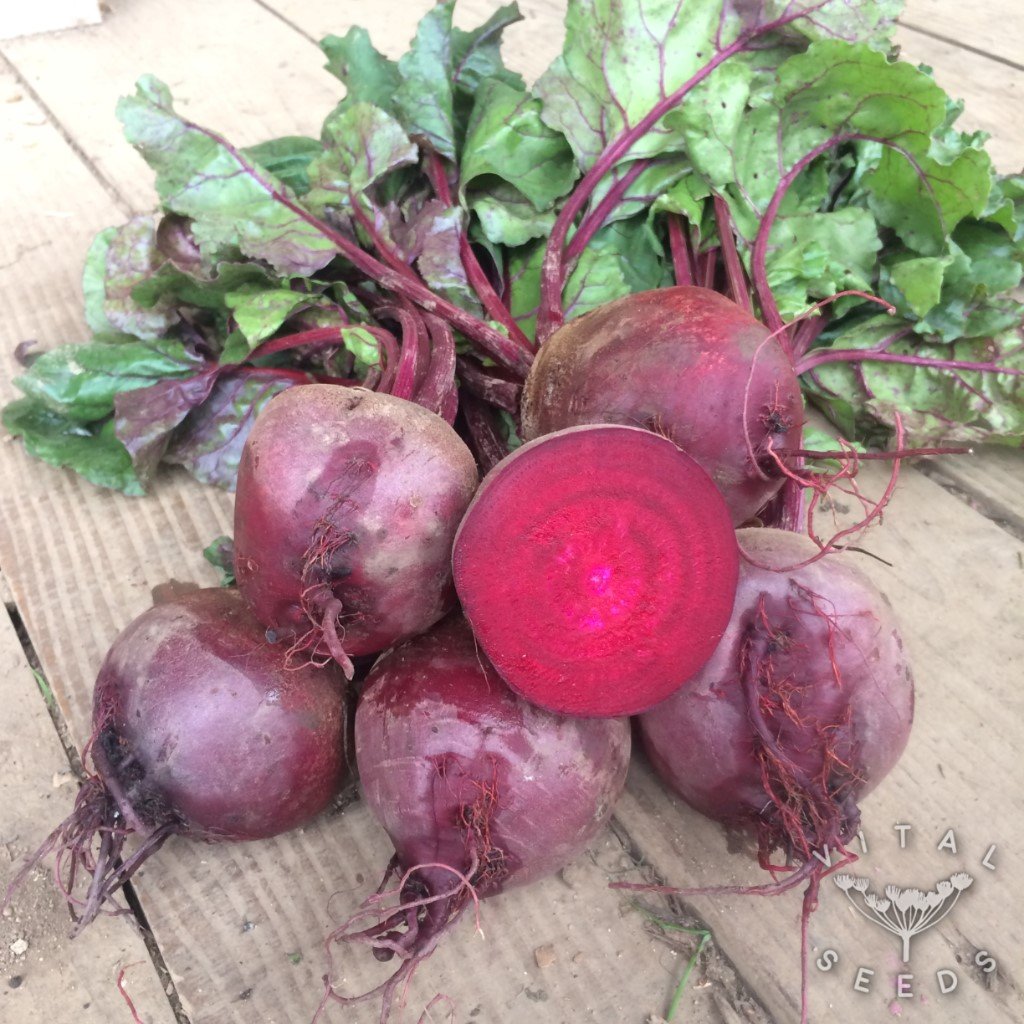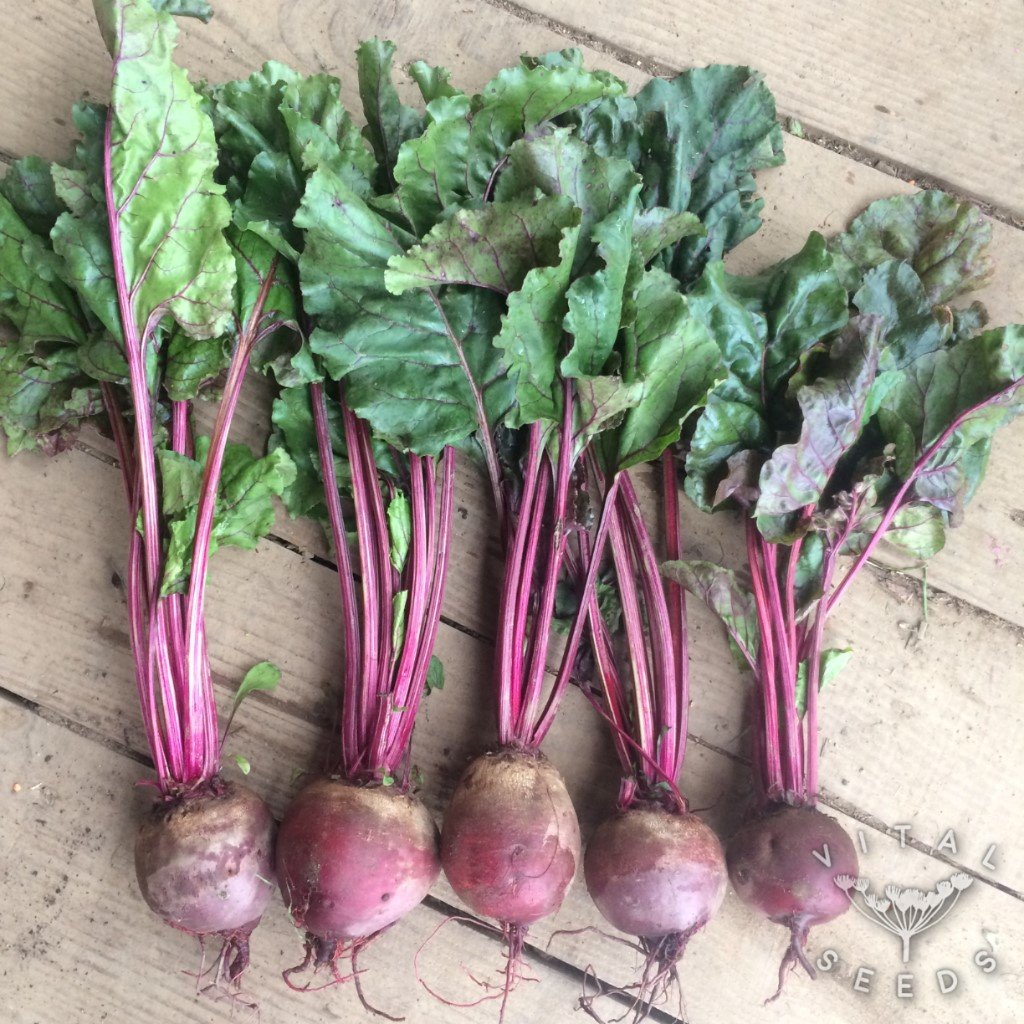Beetroot – Detroit (Organic)
Price range: £2.10 through £3.80
Reliable maincrop beetroot producing large globe-shaped red roots. This is a classic variety, having proved itself since 1892 when it was introduced by the D.M. Ferry Seed Company, in Michigan, USA. It is reliable and high-yielding and remains a favourite with gardeners and growers to this day.
The large, globe-shaped beets have the typical beetroot colour and an excellent flavour making it perfect for baking, sautéing, grating into salads, pickling and anything else that you might want to do with a beetroot. Yes, it will also store well!
(Approximate seed count – 200)

| Month | J | F | M | A | M | J | J | A | S | O | N | D | ||||||||||||
|---|---|---|---|---|---|---|---|---|---|---|---|---|---|---|---|---|---|---|---|---|---|---|---|---|
| Sow | ||||||||||||||||||||||||
| Plant | ||||||||||||||||||||||||
| Harvest | ||||||||||||||||||||||||
Seed Sowing
Early sowings can be made under cover from February in module trays. They can be transplanted into the final position about 4-5 weeks later.
From March, seeds can be direct-sown outside with horticultural fleece for frost protection. Bolt resistant varieties are better at withstanding colder, fluctuating temperatures.
Maincrop beetroot is usually sown outdoors from April.
Try doing multiple sowings from February – July to spread out your harvest. With appropriate varieties for each season, it is possible to have beetroot almost all year around.
Plant Care
Keep the bed moist and well weeded, removing rotten leaves from the beetroot to reduce disease and pest predation. Water more regularly in hot weather to prevent the beetroot from trying to go to seed.
Challenges
Alternaria leaf spot is a fungal disease that thrives in hot and humid conditions. Thankfully it is largely cosmetic and will only reduce your harvestable leaves.
Slugs and snails may be attracted to young seedlings newly planted outside.Damping off is a fungal disease that can be triggered by overwatering and causes plants to wilt and die at the base of the main stem.
Rodents can become a problem later in the season, sometimes eating whole beetroots right out of the growing beds. The best remedy for this is to harvest all storage beetroot at once and keep it in sacks in a cool, dry place that is rodent proof.
Harvest
Beetroot can be harvested from early summer and are best harvested once roots are at least golf ball size. Leave the rest to reach maturity and harvest as and when you need them. The plant tops can be twisted off and cooked and eaten like chard.
Seed Saving
Beetroot will readily cross with other members of the same species (Beta vulgaris) such as perpetual spinach and chard. They are biennial and will flower in their second year either by overwintering in their growing position or selecting the best roots to store and replanting them in the spring. A minimum of 10 plants will be needed.
Allow the plants to flower and go to seed, and as the large seed heads mature, harvest them as they begin to dry either by cutting the entire stalk or rubbing the seeds off the heads into a bucket. Make sure that the seeds are thoroughly dry before placing into long term storage.

